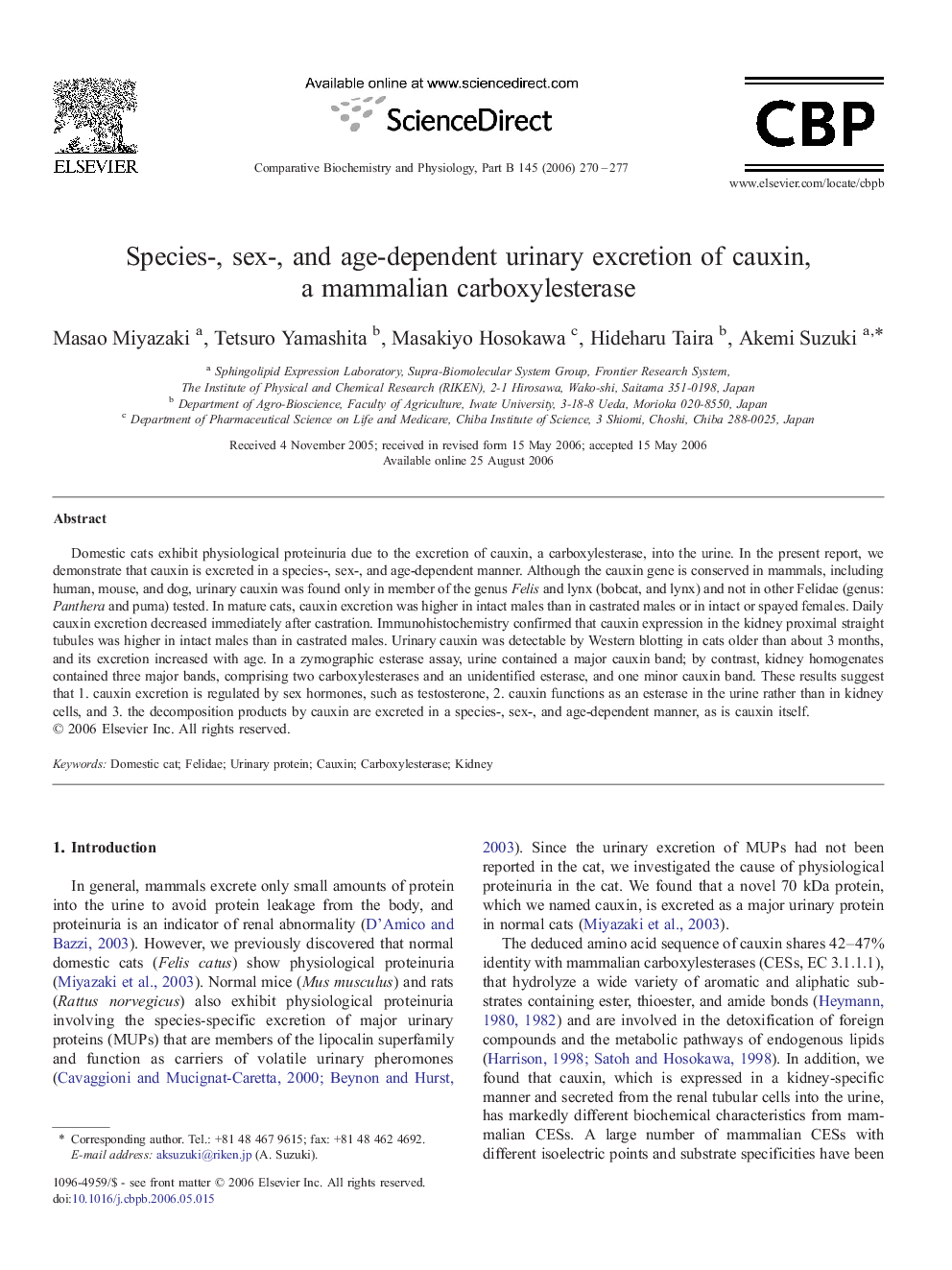| Article ID | Journal | Published Year | Pages | File Type |
|---|---|---|---|---|
| 1976853 | Comparative Biochemistry and Physiology Part B: Biochemistry and Molecular Biology | 2006 | 8 Pages |
Domestic cats exhibit physiological proteinuria due to the excretion of cauxin, a carboxylesterase, into the urine. In the present report, we demonstrate that cauxin is excreted in a species-, sex-, and age-dependent manner. Although the cauxin gene is conserved in mammals, including human, mouse, and dog, urinary cauxin was found only in member of the genus Felis and lynx (bobcat, and lynx) and not in other Felidae (genus: Panthera and puma) tested. In mature cats, cauxin excretion was higher in intact males than in castrated males or in intact or spayed females. Daily cauxin excretion decreased immediately after castration. Immunohistochemistry confirmed that cauxin expression in the kidney proximal straight tubules was higher in intact males than in castrated males. Urinary cauxin was detectable by Western blotting in cats older than about 3 months, and its excretion increased with age. In a zymographic esterase assay, urine contained a major cauxin band; by contrast, kidney homogenates contained three major bands, comprising two carboxylesterases and an unidentified esterase, and one minor cauxin band. These results suggest that 1. cauxin excretion is regulated by sex hormones, such as testosterone, 2. cauxin functions as an esterase in the urine rather than in kidney cells, and 3. the decomposition products by cauxin are excreted in a species-, sex-, and age-dependent manner, as is cauxin itself.
